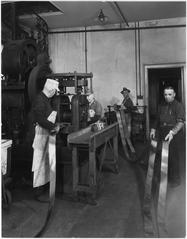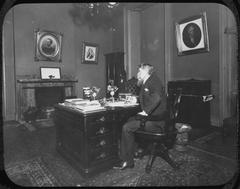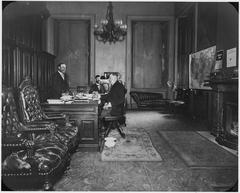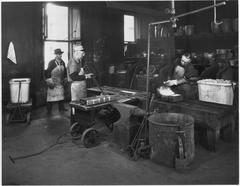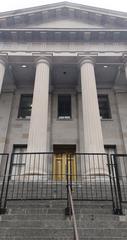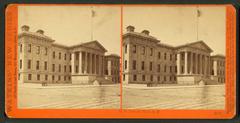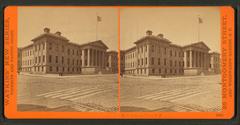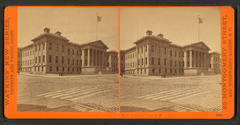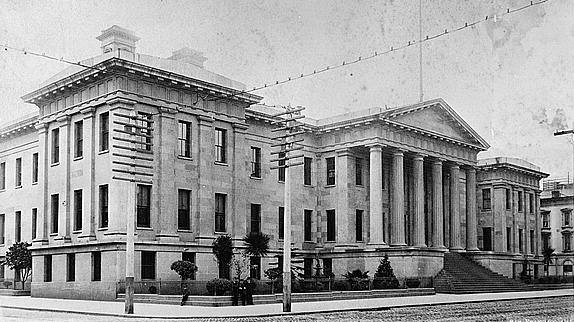
Old San Francisco Mint: Visiting Hours, Tickets, and Historical Guide
Date: 15/06/2025
Introduction
The Old San Francisco Mint, affectionately dubbed “The Granite Lady,” stands as a monumental symbol of San Francisco’s Gold Rush heritage, resilient spirit, and architectural grandeur. Built in 1874, this National Historic Landmark played a pivotal role during the city’s economic boom and famously survived the 1906 earthquake and fire, protecting a significant portion of the nation’s gold reserves. While the Mint no longer operates as a daily museum, it continues to serve as a vibrant cultural venue for special events, exhibitions, and guided tours. This comprehensive guide details the Mint’s rich history, architectural features, visiting hours, ticketing, accessibility, and travel tips, ensuring you can make the most of your visit to one of San Francisco’s most treasured historic sites (usacoinbook.com; Wikipedia; sfmint.com; thesanfranciscomint.com).
Historical Overview
Gold Rush Beginnings and Early Growth (1854–1874)
The origins of the Old San Francisco Mint date back to 1854, when the city’s explosive growth during the California Gold Rush created a pressing need for a local mint. The first Mint quickly became essential to the region’s economic expansion, and by 1874, a new, larger facility was completed at 88 Fifth Street. Designed by Alfred B. Mullett in the Greek Revival style, the new Mint featured thick granite and sandstone walls and an enclosed courtyard with a central well—elements that would later prove crucial to its survival (usacoinbook.com).
Architectural Significance
The Mint’s imposing design projected stability and permanence. Its monumental façade, Doric columns, and robust construction symbolized federal authority and security. While commonly called “The Granite Lady,” the exterior features sandstone from Newcastle Island, British Columbia, combined with granite and iron for fire and earthquake resistance. The central courtyard and advanced vault systems underscored the building’s security focus (Wikipedia; Coins Guide).
Survival of the 1906 Earthquake and Fire
On April 18, 1906, the Mint faced its greatest test. As earthquake and fire devastated San Francisco, Superintendent Frank Leach and his team used the courtyard well to douse the building, successfully saving it—and nearly one-third of the nation’s gold reserves—from destruction. The Mint’s survival was critical for stabilizing the U.S. economy during a time of crisis, reinforcing its status as a symbol of resilience and ingenuity (Saving Places; US Gold Bureau).
Coin Production and Economic Impact
During its operational years, the Old Mint struck over 10 billion coins, including small cents, nickels, dimes, quarters, half dollars, and gold coins, all bearing the iconic “S” mintmark. The Mint’s output was crucial for commerce throughout the American West and remains highly valued by collectors today (usacoinbook.com).
Transition, Preservation, and Modern Use
After coin production moved to a new facility in 1937, the Old Mint served as an assay office and later as a museum. In 1961, it was designated a National Historic Landmark. The building was closed to the public in 1993 due to structural concerns but was symbolically sold to the City of San Francisco in 2003 for a single 1879 silver dollar. Since then, restoration efforts have focused on preserving its historical character while enabling adaptive reuse as an event venue and cultural hub (usacoinbook.com; Treasury.gov).
Visiting the Old San Francisco Mint
Location and Access
- Address: 88 5th Street, San Francisco, CA 94103 (SoMa district)
- Public Transit: Easily accessible via BART (Powell Street station), Muni Metro, and local bus lines.
- Parking: Limited; public transit or rideshare is strongly recommended (San Francisco Mint Info).
Visiting Hours
The Old Mint does not operate as a traditional museum with daily open hours. Public access is limited to scheduled special events, exhibitions, and guided tours.
- Typical Event Hours: Vary by occasion; most public events occur on select weekends or during citywide festivals.
- Current Schedules: Check the official website and event calendar for up-to-date information.
Tickets and Admission
- General Admission: Not available for daily walk-ins.
- Event Tickets: Required for entry during special events and tours; prices vary ($10–$25 for tours; some festivals are free or have a nominal fee).
- Advance Booking: Recommended due to limited ticket availability. Purchase tickets via the official Old Mint website or event partners.
Accessibility
- Wheelchair Accessible: Ramps, elevators, and accessible restrooms are available in most public areas.
- Historic Limitations: Some sections may have restricted access due to preservation.
- Assistance: Visitors with specific needs should contact the venue ahead of their visit (sfmint.com).
Guided Tours and Special Events
- Guided Tours: Available during select events or by appointment. Led by docents, these tours provide behind-the-scenes access and detailed historical interpretation.
- Special Events: Includes heritage festivals, art installations, and San Francisco History Days. The Mint is also a popular venue for private and corporate events (San Francisco History Days; San Francisco Events).
Visitor Tips
- Check the Calendar: Verify event dates and ticket availability before planning your visit.
- Arrive Early: For best access, especially during popular events.
- Photography: Permitted at most public events; professional equipment may require approval.
- Dress: Casual for public events; some private functions may have a dress code.
- Safety: Be mindful of belongings; avoid leaving valuables in vehicles (The Invisible Tourist).
Nearby Attractions
- Union Square
- San Francisco Museum of Modern Art (SFMOMA)
- Yerba Buena Gardens
- The Embarcadero Waterfront
- Ferry Building
Combine your visit to the Mint with these accessible and popular sites (Mint Notion).
Architectural and Cultural Highlights
- Greek Revival Design: Doric columns, granite façade, and symmetrical proportions reflect 19th-century civic ideals.
- Fire and Earthquake Innovations: Iron shutters, thick masonry, and non-combustible materials enabled survival of the 1906 disaster (SEAONC Structure).
- Central Courtyard and Vaults: Provided security and a water source during emergencies.
- Adaptive Reuse: The Mint’s transformation into an event venue and cultural hub illustrates successful historic preservation (Treasury.gov).
Frequently Asked Questions (FAQ)
Q: What are the Old San Francisco Mint’s visiting hours?
A: There are no regular daily visiting hours. The Mint is accessible only during scheduled events or guided tours. Check the official website for current information.
Q: How can I purchase tickets?
A: Tickets are available online via the Old Mint’s official event page or partnering organizations. Advance purchase is highly recommended.
Q: Is the Mint accessible for people with disabilities?
A: Most public areas are ADA-compliant. Contact event organizers for specific accessibility needs.
Q: Can I visit without a ticket?
A: No; entry requires tickets for scheduled events or tours.
Q: Are pets allowed?
A: Only service animals are permitted.
Q: Is there parking?
A: Limited street parking is available. Public transportation is strongly recommended (SFMTA).
Conclusion & Visitor Recommendations
The Old San Francisco Mint is a cornerstone of the city’s legacy—an enduring testament to resilience, architectural excellence, and community identity. While its role has evolved from minting coins to hosting cultural and private events, the Mint offers a rare opportunity to connect with San Francisco’s storied past. To ensure a rewarding visit, always check event calendars, secure tickets in advance, and consider exploring nearby attractions in SoMa and downtown.
For real-time updates, ticket releases, and in-depth guides, download the Audiala app and follow us on social media. Experience the Granite Lady’s unique blend of history, architecture, and vibrant programming—plan your visit to one of San Francisco’s most significant historic sites today!

Sources and Further Reading
- Old San Francisco Mint—History and Coin Production (usacoinbook.com)
- Old San Francisco Mint—Wikipedia
- Complete History of the San Francisco Mint (US Gold Bureau)
- Preservation and Endangered Status (Saving Places)
- San Francisco Mint Official Site
- The San Francisco Mint—Visitor Info
- National Park Service—Old San Francisco Mint
- California Historical Society
- SEAONC Structure—Old San Francisco Mint
- SFMTA Transit Information
- San Francisco History Days
- San Francisco Events at the Mint
- Coins Guide: San Francisco Mint Facts
- Mint Notion—San Francisco Travel Tips
- The Invisible Tourist—San Francisco Insider Tips
- Treasury.gov—San Francisco Mint History


